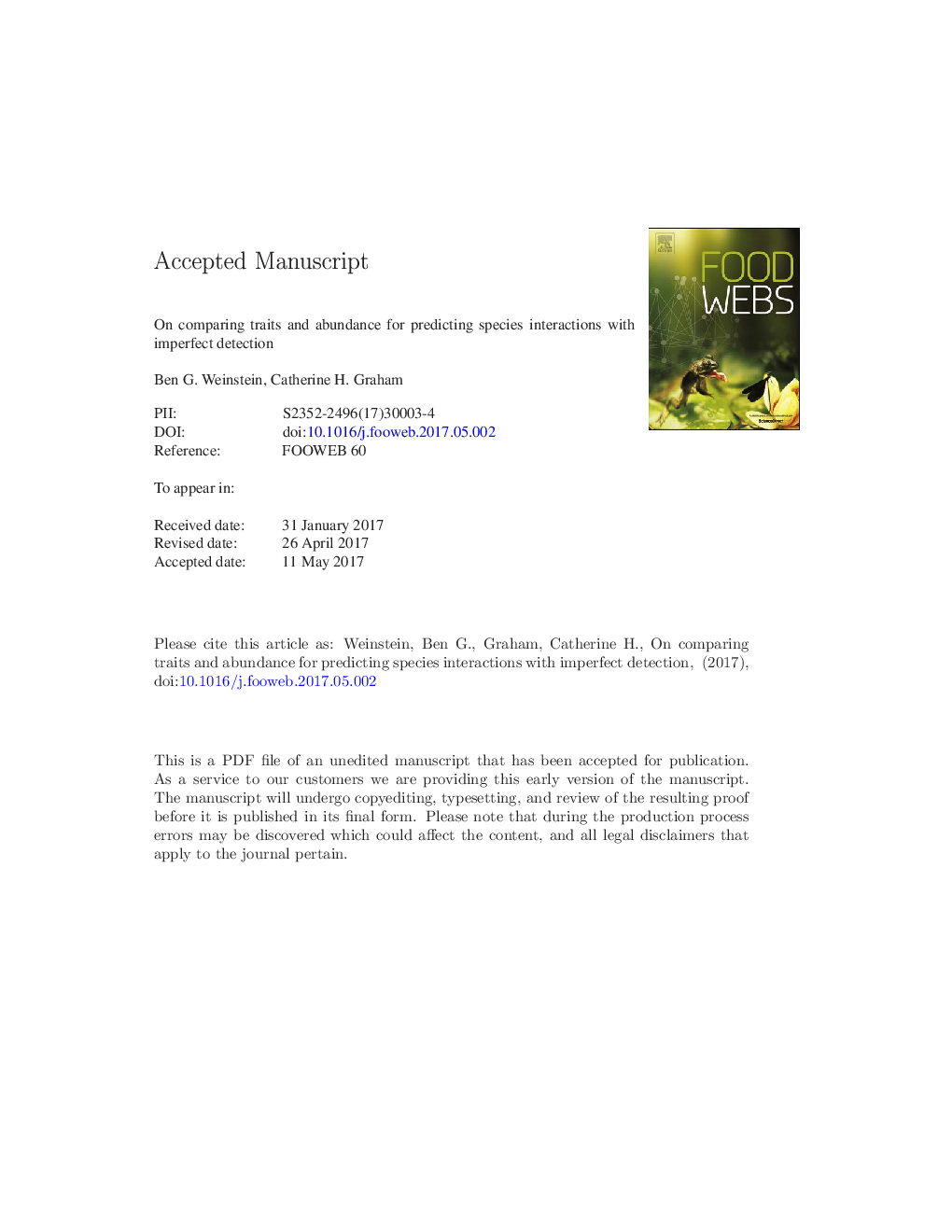| Article ID | Journal | Published Year | Pages | File Type |
|---|---|---|---|---|
| 5759831 | Food Webs | 2017 | 31 Pages |
Abstract
To determine the causes, frequency and stability of biotic interactions, ecologists often use field observations to generate networks of interacting species. The challenge is in determining whether unobserved interactions were undetected due to sampling, or whether they truly do not occur. This uncertainty makes it difficult to predict interactions based on ecological mechanisms. By using hierarchical Bayesian N-mixture models adapted from wildlife ecology, we differentiated the probability of detecting a species from the intensity of species interactions. We began with a brief simulation to illustrate the consequences of ignoring detectability when building species networks. We then applied our model to an empirical dataset on Andean hummingbirds to compare trait-matching and plant abundance in explaining flower visitation patterns. The daily probability of detecting a hummingbird interaction ranged from 14% to 70% among species, underlining the importance of multiple days of sampling when estimating species interactions. The trait-matching model best fit hummingbird visitation rates among plants and pollinators. The plant abundance model was inconsistent across hummingbird species and did not support neutral interactions based on increasing plant abundance. We recommend that network studies account for interaction detectability by separately modeling observation and process mechanisms, focusing on species-level discrepancy in assessing model adequacy, and estimating uncertainty when computing network statistics.
Keywords
Related Topics
Life Sciences
Agricultural and Biological Sciences
Agricultural and Biological Sciences (General)
Authors
Ben G. Weinstein, Catherine H. Graham,
